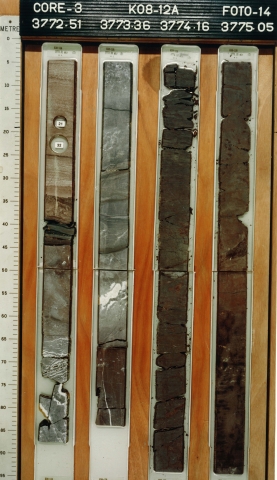Red- to orange-brown, grey, or variegated, silty to fine-grained sandy mudstones. Intercalated sandstone beds consist of 2 to 10 m thick sheets. The sands are white, grey or red-brown, subangular to rounded, moderately- to well-sorted, fine- to medium-grained, with coarse-grained, pebbly intercalations. Carbonaceous matter is common in some grey intervals, specifically in the lower section. Coal seams are restricted to a few localities and specific stratigraphic horizons. Some thin, light-grey, dolomitic limestone beds can be encountered.
Well-drained flood plain. During certain periods of elevated base level, swamp areas with poorly-drained soils formed. Mudstone with thin sheet sandstones: distal depositional setting. Sandstones: sheet floods or small-scale fluvial channel systems (Leeder 1990; Besly 1988; Besly 1993).
Placed at the top of the uppermost massive sandstone bed of the Hospital Ground Formation, which is overlain by a mudstone interval of more than 60 m thick. Locally, the Step Graben Formation may rest directly on the Maurits Formation. This contact can be conformable or unconformable. In the vicinity of the Mid North Sea High and Schill Grund High, the formation might rest unconformably on older formations, analogous to the Brig Formation in the UK offshore (Cameron 1992).
Covered unconformably by the Upper Rotliegend Group. The top of the formation is constituted by the Saalian Unconformity.
87-105.
